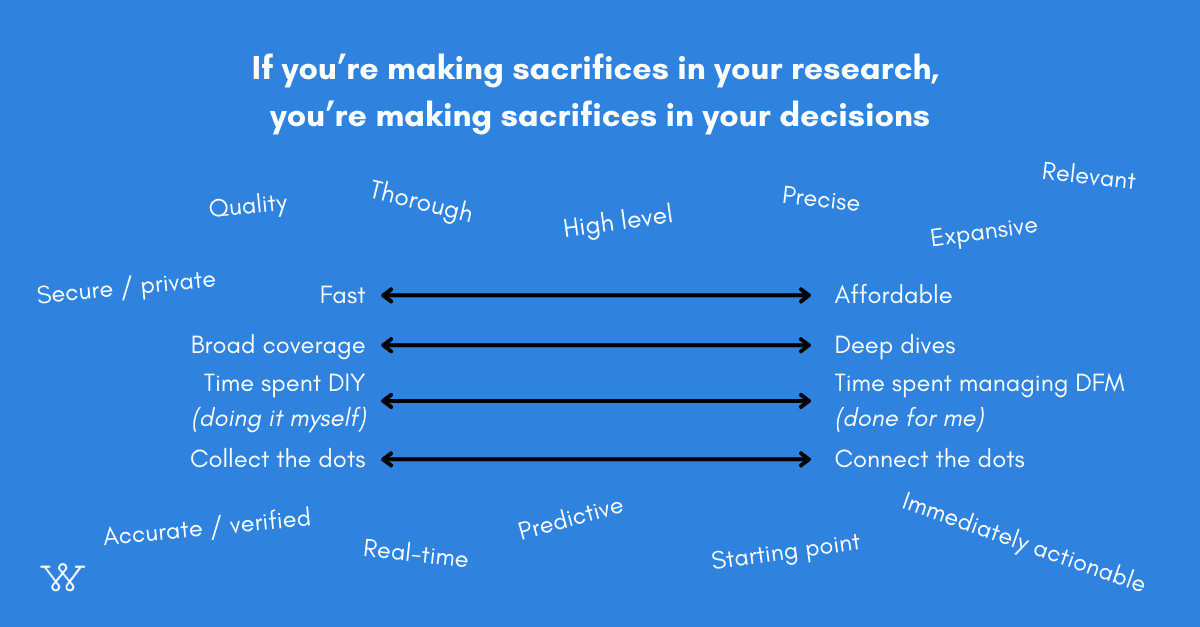We've entered a new era of research
Quality business decisions depend on quality information.
But what does “quality information” even mean?
Fast? Extremely accurate? Directionally helpful? Hyper-specific? Far-reaching? Customized? Universally applicable? Real-time? Predictive? Affordable? Deep diving? Quickly digestible?
The list goes on … and the answer totally depends.
And that means our job (which requires quality information in order to make quality decisions) also includes defining “quality,” based on the context, the stakeholder, the magnitude of the decision, etc.
Until now.
Last week, we dug into 6 types of questions to use in your research, and when each is most effective (grab the infographic here).

Today, let's explore the trade-offs we once had to navigate when trying to get information needed to make better, stronger, smarter decisions – and how they are going away!
We're all familiar with these stages of doing research:
Confirm objectives of your broader effort (What are we trying to do or accomplish?)
Identify knowledge gaps (What information do we need to help us do that?)
Assess the acceptable “margin for error” around those gaps (Do we need directional insight, or to nail it?)
Formulate research questions or hypotheses to test (What are we going to ask? See the 6 types of questions to consider here)
Figure out how to get those answers (What approach, tool, or team member will get us this? More on this next week!)
But #5 ALWAYS has a “gotcha!”
Because the approach you chose depended on the trade-offs you were willing to make, given constraints you faced and limitations of existing options.
Have you EVER been able to check all of these boxes to the extent you needed to?

But now – finally, in Q4 of 2023 – AI tools and disruptive solutions are pushing the boundaries on what’s possible.
Between emerging LLMs, new AI features added to existing solutions, and creative tools disruptive providers are introducing, we’re living in a whole new era of research – one filled with a lot more AND and a lot less OR.

So next time you’re considering how you’ll get the information you need to make important decisions, ask yourself this:
Can you be confident in your decisions if you’re not confident in the information you used to make them?
And instead of making trade-offs, use one of the many new, high-quality ways to get actually-useful answers.
Our roundup of the best AI-powered research tools has a bunch of great options, or grab some time with us (Wonder checks all of those boxes 😉).